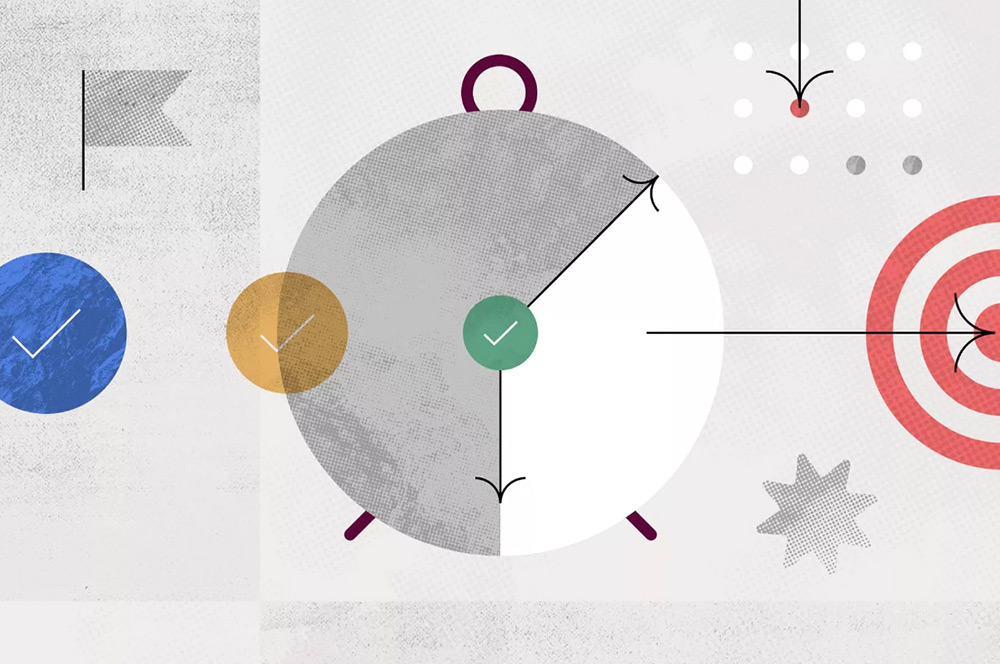Jahnvi’s hard work paid off when she got promoted to being the first-time manager. She thought it would be a doddle, however, when she actually got into her managerial role, she had bigger fish to fry than just catching the fish. As much as it was exciting and a new experience, it was an overwhelming transition for her. She had a lot to accomplish and her new experience made her adamant to take some hands-on training to make her steam and walk past the pitfalls and do her best for her team and organization.
Up until now, she has gone through the requisites of becoming a first-time manager, her values, locus of control, setting goals and achieving them, her learnings from The Strangest Secret, how to handle the missed goals, an overview of feedback, the gateway to discovering the blind spot, frameworks of feedback, the concepts of feedforward, the overview of the interpersonal skills, the techniques to enhance interpersonal skills, better team management using people reading guide, techniques to effectively manage a team, an overview of time management, and the time management matrix.
The last article piqued her interest and she wanted to learn ways and techniques to use the time management matrix in the best possible ways.
Jahnvi was going through research and found this:
A single point increase in procrastination on a 5-point scale is associated with approximately a $15,000 drop in salary and 322 fewer days of employment.
– Brenda Nguyen et al.
Inadequate time management invariably leads to job delays and, as a result, huge financial losses for businesses. However, unproductive activities, which are a sign of insufficient time management, are also associated with some hidden costs. Unfortunately, these costs harm both employed people and businesses.
Procrastination is an issue that must be addressed at its source. You cannot eliminate it simply by giving yourself a pep talk or reading a one-time management book. Changing habits and behaviors is the key to overcoming procrastination. If you constantly procrastinate, it could be because you have never created positive habits that will help you get things done. This does not, however, mean that there is no hope for you. There is always the possibility of success!
Jahnvi realized that this is the root cause of unfinished tasks and pending piles of work, and she thought it is of utmost importance to find a remedy for this problem. So, she placed it in the important and urgent quadrant of her to-do list.
Techniques To Overcome Procrastination

There is always a monkey in our heads that drives us off the path we need to tread to get all the tasks done. However, there is no exact cause for the monkey to take over the wheel, why this downward spiral starts in the first place, and you start procrastinating.
Essentially, this means that the limbic system in your brain is the instinctive part that is concerned with survival and happiness. The prefrontal cortex is slower to react because it is focused on the broad picture and future goals.
The problem arises when the limbic system activates too frequently or excessively. If your prefrontal cortex rarely activates, you’ll be left putting things off until you have a ridiculously limited amount of time to complete your task.
There are a few options for dealing with this.
Divide and Reassign

The whole idea of the matrix is to stimulate questioning as to whether the task fits the criteria of important or urgent. Once you place every task in their respective quadrants, you will immediately be able to identify their priority.
Always put your activities in writing for better clarity of the priorities and place it in front of your eyes as it will act as a constant reminder.
To be more clear with setting priorities, include deadlines in your tasks to guide your pace and set your mind to the task to be finished first.
The use of this exercise depends on the application and circumstances. There is no rule governing this. Once a week is sufficient for some evaluation and updating. In some circumstances, the workload and nature of the tasks necessitate a daily update. Whatever regime is adopted, it is essential to consistently dedicate time to this activity. This guarantees that activities continue uninterrupted.
Making a weekly assessment is another approach to using the matrix. This necessitates the creation of six blank matrices, one for each workday and one for the weekend.
It is quintessential to closely monitor your working style and jot down your activities on an hourly basis to divide them into four different quadrants of the matrix. Sit by yourself in the evening and check what you have done the entire day and divide the activities accordingly.
- Let’s say, you started working at 9:30 AM. So, from 9:30 AM onwards, make a list of all the activities you covered till the time you sat with your work.
- Place them in different quadrants according to their priority and observe whether you used your time productively or you were indulged in time wasters.
Learning how to use the Covey time management matrix takes effort, however, the benefits are numerous. Once you get used to using Covey’s Matrix, you will be more conscious of the quadrant comprising the majority of the workload.
Time management is not about doing as many tasks as possible in the least amount of time. It is advisable to do less and give each task the attention it requires.
This mode of thinking teaches you what is vital and what is not. There are scheduling applications and other electronic time management tools that help with organization, in addition to determining what is most important. The most crucial tasks will be completed with proper time management.
Jahnvi understood that being productive will require hard work and good organization. She decides upon focusing on small changes at first, however, being honest and keeping reviewing the progress is the key. As long as she takes positive steps, she will find results with higher productivity and be successful.
DEW Method

Anticipating deadlines and keeping up with your job ensures that you remain productive and produce high-quality results. Procrastination, on the other hand, comes when you put off working on a task until another time. While most people postpone on occasion, continuous procrastinating can have a negative impact on your job performance.
Another technique to fight procrastination is the DEW Method.
D – Desired Future State
- Imagine you are living the life you have always envisioned for yourself. Defining your desired future state and building a strategy around how to reach that point.
- Writing is the best way to get anywhere in life. Write down every single detail of your desired future state, and describe the feeling you have once you reach it.
- How does it make your life different than it is at present?
- Observe the changes you see in your future state, are they making you happy? Capture every detail, write them down, and be specific.
E – Enablers to reach the desired future state
- Now write down the things required to reach your future state.
- What are the necessary conditions to reach your destination?
- What kind of support system, environment, and ecosystem will work for you?
- What are the steps you will take to complete your journey?
- Mention every single detail to gather all the things you need to reach your desired future state.
W – Working Towards It
- Once you are aware of the things required to reach your destination, work towards achieving it.
- Satisfy those conditions with specific and result-driven activities (according to the priorities you set in the matrix).
- Seek the activities, stay busy completing them, and level up and meet your higher self.
- Always keep in mind – What is the result you desire or what is the reason you are starting to work towards your desired future state in the first place?
Follow the link to understand the DEW method in more detail – https://www.forbes.com/sites/forbescoachescouncil/2022/09/22/how-to-effectively-capture-the-power-of-imagination-using-the-dew-method/?sh=102fa1e23162
Self-Reflective Letter

Christopher Parker, a British actor said, “Procrastination is like a credit card: it is a lot of fun until you get the bill.” Most people can relate to this sentence when that moment comes where it feels like the hot-boiling water running down our heads and we could not do anything about it. It is the work pressure after procrastinating on a task for way too long.
One of the ways to deal with procrastination is to write a letter to yourself that jots down the details of your everyday activities and how to improve your productivity based on self-reflection.
- It opens you up to think about the things you were doing inappropriately.
- It allows you to review and revise your affirmations to align them with your recent goals.
- It allows you the capacity to accept the feeling of overwhelm and taking one step at a time will only make you work more efficiently.
- It allows you to appreciate the great length you have covered and come this far in your journey.
- It relieves the panic and the rush to win the race and accept the fact that it’s your marathon and you have a competition with yourself, you have got this!
Jahvi was able to grasp every detail in these techniques and is determined to implement them in her life and help her team to get a good grasp of these time management techniques to skyrocket their performance. She also understood that she won’t be able to do everything on her own and has to learn the art of delegation for better results. In the next article, she will go through an overview of delegation and how it can facilitate her performance.
https://www.actitime.com/time-management-guide/importance-of-time-management
https://humanskills.blog/time-management-matrix/#h-what-is-stephen-covey-s-time-management-matrix
https://www.achieveyourbestlife.com/2015/03/19/procrastination-an-open-letter-to-myself/
https://hbr.org/resources/images/article_assets/2022/04/R2203L_BRANCHI_TOC.jpg
https://www.teamly.com/blog/wp-content/uploads/2023/02/10-2.png
https://programminglibrarian.org/sites/default/files/elected_officials.jpg
Written By: Jimmy Jain
Edited By: Afreen Fatima
Society of Design Thinking Professionals









